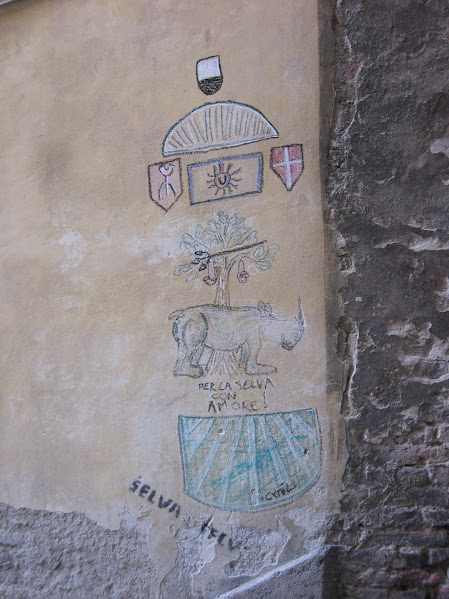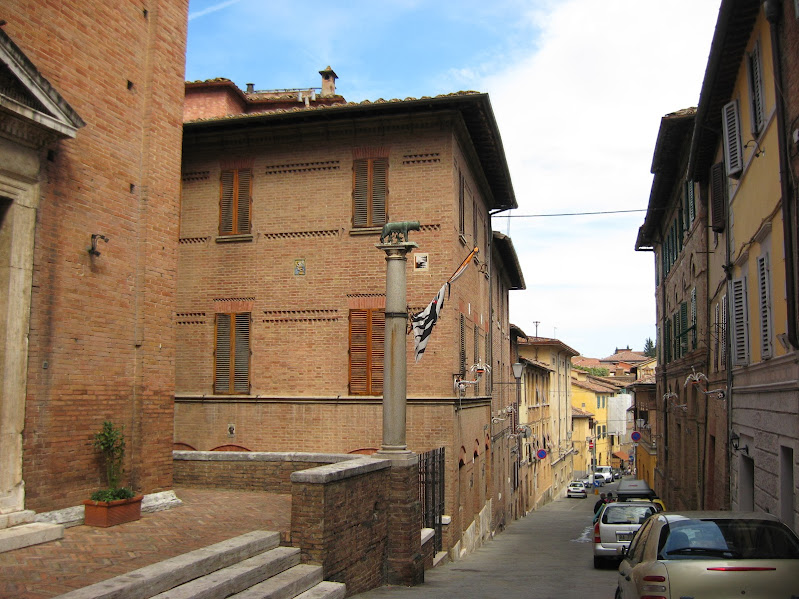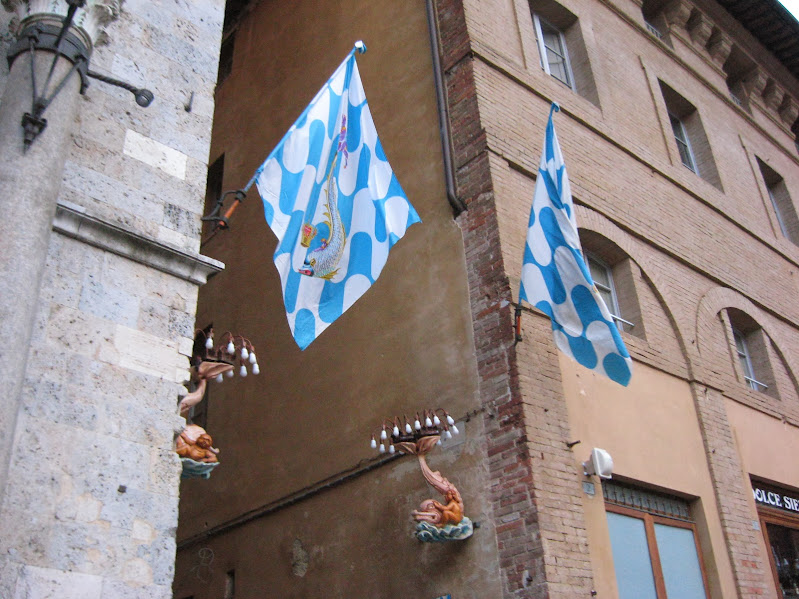
My very first novel was set in 12th century Siena. I completed it in 2012 or so, and it was a hot mess, but I got it done. I had only ever completed two short stories before this, and I knew I wanted to write novels and not short stories, so seeing this 100,000 word monster through was important. This particular incarnation won’t see the light of day, but the setting, the story, and the main characters stayed with me, and I’m hoping to get their story reworked and completed one day.
In the 12th century, Florence and Siena were rivals, divided by many things over the decades. This is the era of Dante, before he was exiled, when he was a young man mooning over Beatrice. There is a famous battle, painted on the walls in a municipal building in Siena’s Campo depicting the battle of Montaperti in 1260.
Siena, like so many towns in Italy, is built on a hill and dates back to Roman times, so it was originally a fort. It’s famous for the horse race, the Palio, that sends bareback riders zooming around the Campo, an ancient tradition.
The military nature of medieval Tuscany is why Siena is divided into contrade, neighborhoods with specific insignia and traditions and intertwining families. When the alarm bells rang, the men of the neighborhoods would go to the warehouse nearby where they kept the weapons. The contrade each also train and race the horses, with colors and emblems centuries old. Each contrade has a church and museum. Tourists don’t go in them. Siena and the Sienese are not interested in tourists or the tourist economy. Sienese see through tourists. It’s very strange compared to other destinations, but I knew about it before we took this trip. The people and the town are very insular, but I’ve read some interesting books about outsiders adopted by a contrada. If you’re interested, Seven Seasons In Siena by Robert Rodi is a book I highly recommend.
Tourists usually only go for day trips to Siena, but we stayed a week. It’s tiny but charming and we walked through all the contrade and from gate to gate to gate. Lots of very steep hills to get the cardio going. I was already in love with the Siena in my head, and I’m dying to go back.
I’m posting some pictures showing the contrade symbols and colors so you can get an idea. They don’t represent any ideals, and I’m not sure what their origins are. There are abolished contrade, too, from before a massive consolidation in the 18th century.
Also, keep in mind this is where the original Romeo and Juliet story came from. A book about this, fiction, is Juliet by Anne Fortier, highly recommended. Writing about them makes me want to read them all over again!

A little hand-drawn love for the Forest…

The black and white flag, if I remember correctly, is the Wolf contrada. Lupa refers to the she-wolf, of Remus and Romulus fame, and the legendary founders of Siena, Senius and Aschius, Remus’s sons.

Onda, the wave. All the contrade also have allies and enemies in the other contrade.

Valley of the Ram. I love all the little embellishments, and they mark the boundaries.
There are 17 contrade. And this post was quite a rabbit hole!
Siena is a beautiful city but going up and down the hills wasn’t kind to my asthma.
LikeLiked by 2 people